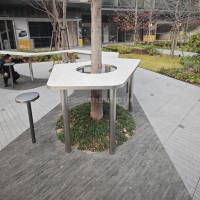Welcome to the website for landscape facilities products and knowledge.
What is the bin’s carbon footprint, and are there efforts to offset it?
The carbon footprint of a bin refers to the greenhouse gas emissions generated throughout its lifecycle—from production and transportation to waste decomposition. Traditional waste management, especially in landfills, releases methane, a potent greenhouse gas, contributing significantly to climate change.
However, efforts to offset this impact are growing. Many municipalities and companies are adopting sustainable practices like recycling, composting, and waste-to-energy programs to reduce emissions. Additionally, carbon offset initiatives, such as reforestation projects and renewable energy investments, help neutralize the environmental harm caused by waste.
Innovations in biodegradable materials and smart bins that optimize waste collection routes also play a role in minimizing the bin’s carbon footprint. By embracing these solutions, we can move toward a more sustainable future where waste management aligns with environmental preservation.
Related search:

Recommendation
An outdoor bar counter with stainless steel and terrazzo materials in an irregular shape